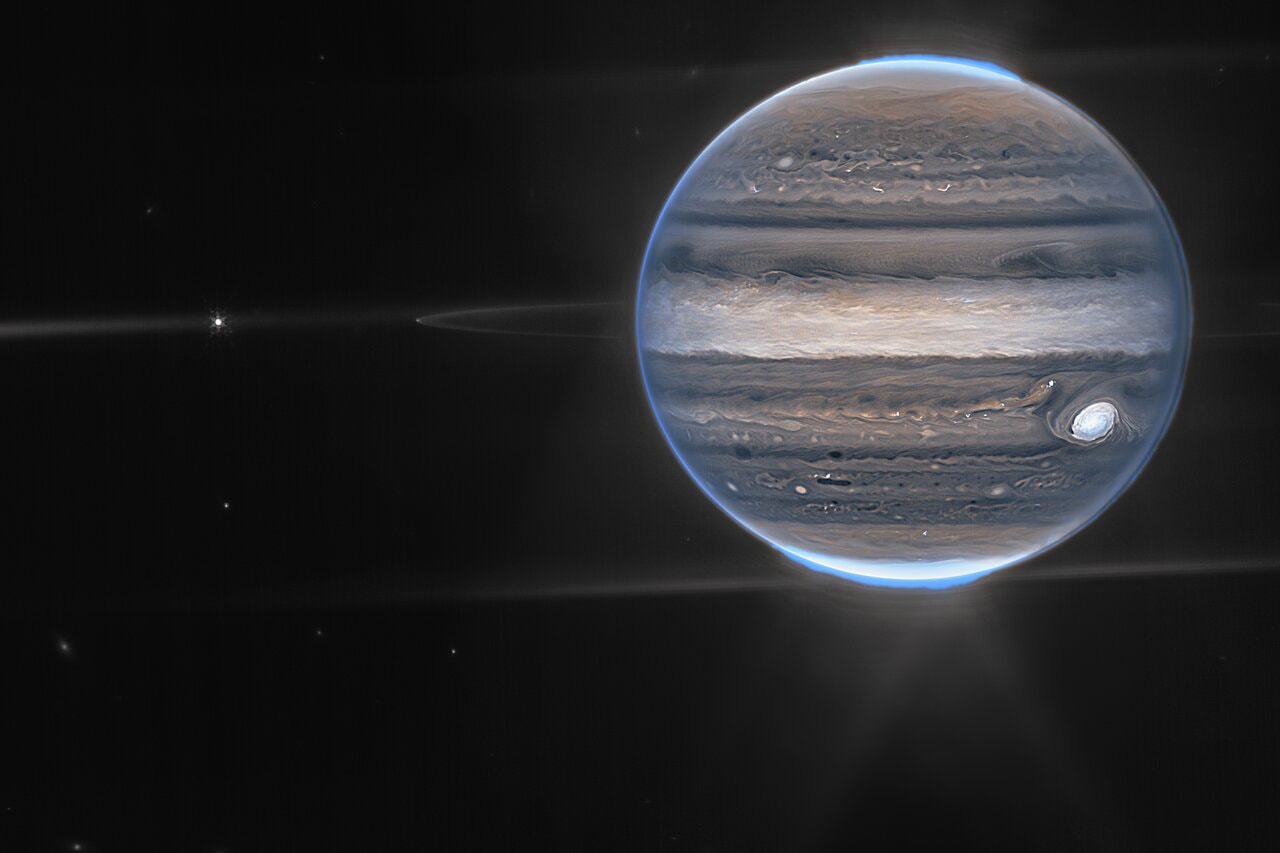
Posted on 08/23/2022 5:23:19 AM PDT by Red Badger

NASA has shared a new image taken by its James Webb Space Telescope. Earlier this month, the space agency published photos of Cartwheel Galaxy. The galaxy is located in the Sculptor constellation approximately 500 million light-years from Earth.
Now, NASA is using the telescope to get a closer look at the planet of Jupiter and its surrounding moons. As the largest planet in the solar system, Jupiter is considered the third brightest object in the night sky from Earth, following the Moon and Venus.
The new photograph was composed using two filters on the Webb’s NIRCam instrument, an imager that detects light to study how and when stars, planets and galaxies were formed.
“In this wide-field view, Webb sees Jupiter with its faint rings, which are a million times fainter than the planet, and two tiny moons called Amalthea and Adrastea,” NASA observed. “The fuzzy spots in the lower background are likely galaxies “photobombing” this Jovian view.”
The space agency said that the telescope’s future Jupiter observations will aid scientists in learning more about the planet’s inner life.
Simply AMAZING!!!!!
Thanks again for your work.
So many responses and so little time.
LOL.
I remember decades ago, Uranus was pronounced as if people were saying “your anus”. Apparently due to the dirty jokes provoked, nowadays most people pronounce it similar to “your in us”.
But couldn’t that sound like “urine-us”, and similarly provoke dirty jokes????
They mention that the rings are about 1 million times fainter than the planet. The pixels are sampled by analog-to-digital converters (ADC) to digitize the data for each pixel. A 16-bit ADC only has a full resolution of 65,536. For a resolution of one million they would need a minimum of a 20-bit ADC. I know that there are 16-bit, space qualified ADCs. And 20-bits is absolute minimum because you need headroom above max signal level so they would probably need 24-bits. And I don’t know if there are even non-space 20-bit ADCs. That is why I thought they had to be using a dynamic range compression scheme like what I mentioned before. It is probably why old images don’t show the rings.
True so I wonder what the halo type thing is? Maybe just a photo artifact.
I did a web search and did find 20-bit and 24-bit ADCs, but the sample rate is really slow. Much to slow to handle a large CCD array that would take these images.
When it comes to “Gas” giant planets. Just how much of them are gas and what kind?
It’s a gas gas gas gas
And a Storm bigger than the earth spiraling merrily away.
What is is with the ‘spikes’ around brighter dots?
They are also around the planet too, looking like clouds north and south of the planet.
Were those expected?
Can they be filtered out?
For a loooooong time.
Galileo first noticed in his ‘new’ telescope.............
Mainly HYDROGEN, HELIUM, METHANE, AMMONIA and WATER VAPOR..........................
Except that “surface” is just the denser part of the atmosphere. The real surface is probably quite a few miles below that.
Actually that is what I thought.I always wondered if Jupiter could be ignited and become a dwarf star.
Jupiter would need much more mass to become a star.........................
Yeah, right ...not sure what the whole hubbub is about, frankly. Kind of a cool image, but beyond that, 🤨🧐
Disclaimer: Opinions posted on Free Republic are those of the individual posters and do not necessarily represent the opinion of Free Republic or its management. All materials posted herein are protected by copyright law and the exemption for fair use of copyrighted works.